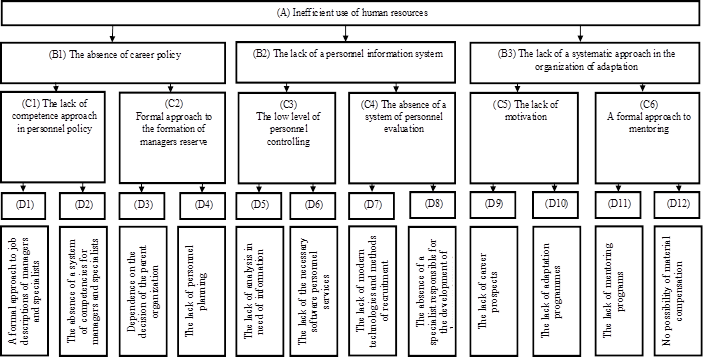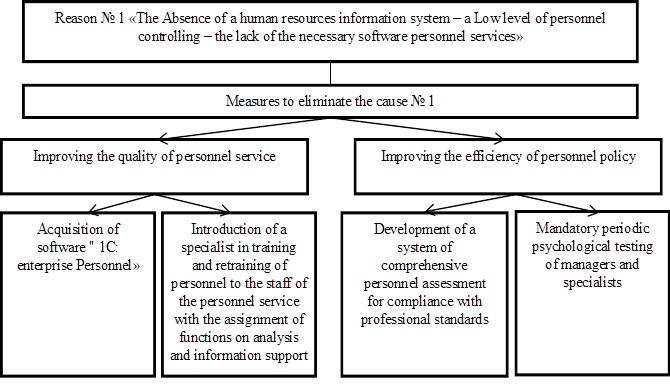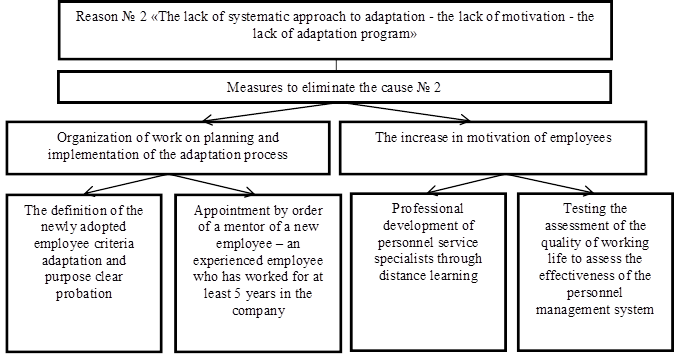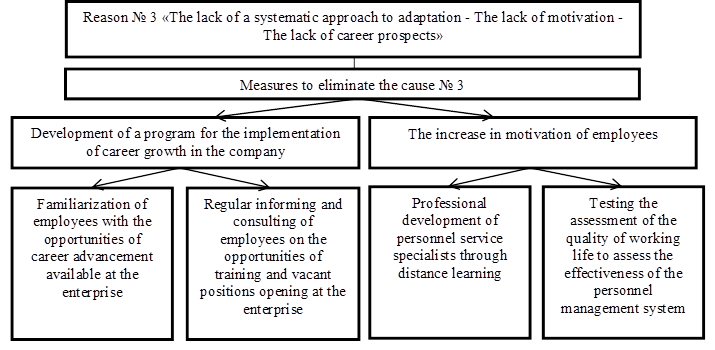Abstract
In accordance with the program for the development of the digital economy in Russia, the real sector enterprises should provide data on the developed forms for their entry into the unified state information system of the industry, which request a huge number of unrelated indicators. At the same time, information contained in various forms is repeatedly duplicated, which reduces the productivity of labor and contradicts the very idea of the digital economy about the effective application of the capabilities of modern information technologies. An important task of the railway transport, dictated by the increased digitalization of the work of employees in the present conditions, is the maintenance and upgrading of the skill level of the staff. In addition, the need to ensure high quality characteristics of employees, especially managers and professionals, is due to the complex tasks of reforming the industry, often requiring non-standard solutions. Recently, the management of JSCo “Russian Railways” has made quite a lot of efforts to increase the efficiency of using human resources and create an effective system of personnel management. The article investigates the efficiency of using labor resources in one of the structural subdivisions of the branch of JSCo “Russian Railways”, identifies the reasons for the inefficiency and suggests ways to solve them.
Keywords: Digital economylabor productivityrailway transportpersonnel motivationlabor remuneration
Introduction
Despite the fact that the term "digital economy" was coined in the late 1990s, referring to the concept called "e-business" and "e-Commerce", and, in fact, the digital economy developed privately through the Internet, two decades later it coincides with the realities of our economy. Most enterprises today use the Internet, and their competitiveness is determined by the extent to which the Internet and other advanced information technologies (IT), such as mobile, cloud applications and most blockchains, transform business models. Therefore, the concept of digital transformation, as well as the use of technology to improve productivity, is one of the issues that deserves great attention, especially with regard to the sustainable economic development of large companies.
In his Address to the Federal Assembly in 2016 and his speech at the 2017 international economic forum in St. Petersburg, the President of Russia noted the need to start a large-scale trend in the development of an important component of Russia's national economy - the digital economy, taking into account its innovative development.
The need to develop the concept of the digital economy in the national economy of Russia is justified by statistical data on the growth of the share of the digital economy in the GDP of many national economies. Thus, in 2015, the share of the digital economy in the US GDP was 6%, in the EU GDP - slightly above 5%, including in the UK - about 8.4%, in Russia about 2.1%, which is 1.3 times more than 5 years ago. According to Boston consulting group in 2016, the national economy of Russia is on the 39th place in the world economy out of 85. At the same time, over the past 5 years, the national economy of Russia has moved from the group of catching-up farms to the main group (Federal Service of State Statistics, 2018). At the same time, the national economy of Russia occupies a leading position at the level of infrastructure development between BRICS farms (Bergeaud et al., 2015).
However, the lag of the national economy of Russia from the leading national economies is about 6-8 years.
Thus, in accordance with the program of development of the digital economy in Russia, enterprises of the real sector should provide data on the developed forms for their entry into the unified state information system of industry, which request a huge number of unrelated indicators. At the same time, the information contained in various forms is repeatedly duplicated, which reduces productivity and contradicts the very idea of the digital economy about the effective use of the possibilities of modern information technologies.
Problem Statement
Over the past decades, the railway sector has increased its productivity in Russia and the world. During this period, rail productivity (measured by gross value added per employee) caught up with, and then overtook, average productivity in the economy of both Russia and the EU. This is a good indicator of development.
An important task of railway transport dictated by the increased in these conditions of digitalization of workers is to maintain and professional development of personnel. In addition, the need to ensure high quality characteristics of employees, especially the head of organization and professionals, due to the complex tasks of reforming the industry, often requiring innovative solutions.
JSCo "Russian Railways" pays considerable attention to the selection and training of personnel. In the documents of the Company priorities of development of qualities of workers are formulated. Thus, in the concept of personnel work for 2015-2020, the emphasis was placed on the achievement of qualification, competence, diligence and loyalty by employees.
Competence brings together the employee's knowledge, experience, behavioral skills, determined by the goal, the current situation and position. That is, the second concept of the composition of the characteristics of the employee covers the value of the first and expands the range of qualities of individuals (Bulkina, 2013).
The use of competence-based approach to the formation of qualitative characteristics of the staff allows you to create a team of employees with a given extended set of guaranteed qualities. But the formation of functional competence (education, experience, etc.), built on training, in the railway industry today is quite formalized, but the behavioral component of competence (responsibility, initiative, independence, etc.), according to Chen & Haynes (2015) is not reflected in the development of personnel.
A theoretical understanding of labor productivity problems in a market economy is presented in Debrezion, Pels, & Rietveld, (2011), Givoni & Dobruszkes (2013), Grossrieder (2011), Ishunin (2011), Janic (2011), Leunig (2010), Westin & Kågeson (2012), Yan, Huang, & Peng (2011) and Zhao & Chang (2012).
Research Questions
Certainly, the industry pays great attention to professional training. The system of development of employees of JSCo "Russian Railways" is gradually filled with new areas of work with the staff and according to the documents currently has in its composition:
training, retraining and advanced training of personnel;
career organization of employees of enterprises;
personnel certification;
the formation of a reserve (Ishunin, 2011).
Special attention should be paid to the youth policy of JSCo "Russian Railways".
JSCo "RZD" recognizes young people as a strategic resource for the future of the Company. The functional strategy for the development of human resources as the basic task is to ensure the effective youth policy of JSCo "Russian Railways" and the organization of targeted programs. Currently, the Company employs more than 1.1 million people, including 270.8 thousand people (23.2 %) - young workers under the age of 30 years, of which 64.1 thousand people replace the positions of managers and specialists.
Today, due to the reduction of vacancies, it is difficult to practice students in the structural units of the branches of JSCo "Russian Railways" in paid jobs (The labour code of the Russian Federation). Taking this into account, as well as the profile training of students enrolled in railway specialties, the Company primarily focuses on student teams formed on the basis of universities and technical college of railway transport. For these students, the work in the student group is the same for practical training, during which they acquire a working profession and practical skills, consolidate the theoretical knowledge gained during the period of study at the institution.
In order to attract promising young professionals to work in the Company developed and implemented a system of grants and scholarships of JSC "Russian Railways", at the moment it`s established:
150 annual scholarships named after P.P. Melnikov (from 1.3 to 4 thousand rubles per month) for postgraduate student and students of universities and technical colleges;
35 scholarships named after A.L. Stieglitz (2.6 thousand rubles per month) for University students studying in economic specialties;
300 grants in the amount of 35 thousand rubles for University students and 200 grants in the amount of 25 thousand rubles for the development of diploma projects on the instructions of the Railways.
The departments and branches of JSCo "Russian Railways" are actively working on the formation of a personnel reserve of promising senior students.
In the youth personnel reserve enrolled more than 2.5 thousand students of higher educational institutions of railway transport. elected students undergo additional special training in the system of "author's" classes, are employed in the company's branches; their professional and career growth is planned by the personnel management services. But as for the practical work with the staff in the structural units, geographically remote from the branches of Railways, then, as shown by anonymous surveys of employees, there are a number of negative points:
lack of real opportunities for employees to participate in the discussion of the organization, especially in addressing issues such as wages, social services;
inadequate assessment of personal qualities and performance result;
individual workers due to lack of diagnostic mechanism;
personal potential;
the presence of certain protectionism in hiring;
uneven loading of the control apparatus and the discrepancy of the employee occupied the place (Kosorukova, 2014).
The emergence of such negative moments in our region is primarily due to the problem of unemployment (especially in winter).
The stability of the economic basis of personnel policy is achieved by the unity of goals and specific interests of all members of the workforce interested in improving the efficiency of production, its development and improvement, which in turn provides a more complete satisfaction of the needs of employees (Pfeiffer, 2013).
The document review regulating the personnel policy of JSCo "Russian Railways" showed that in recent years the company's management has made great efforts to improve the efficiency of the use of human resources and to create an effective system of personnel management. The existence of a negative, considered by many experts in the field of human resource management is inevitable and should serve as a certain guide of personnel policy with the aim of eradicating shortcomings (Skarinou, 2014).
JSCo "Russian Railways" has a set of corporate regulations, which includes the policy of personnel management, staff regulations, regulations on remuneration and compensation, regulations on personnel assessment and regulations on personnel recruitment, etc. Next, we present the results of the analysis of the effectiveness of the use of human resources in one of the structural units of the branch of JSCo "Russian Railways".
In our opinion, the causes of inefficiency may be:
the lack of a systematic approach to the organization of personnel work;
all functions on the organization of personnel work are assigned to the personnel department.
According to the staffing table, the human resources Department is represented by one human resources specialist. Job description overview of the personnel specialist showed that all its functions are reduced mainly to the maintenance of personnel records, even the issues of training and retraining are not reflected in it;
the absence of a system of adaptation of personnel;
the lack of personnel evaluation system, etc.
Purpose of the Study
Program introduction "digital economy" demands from the enterprises of additional means and resources that is possible only at those enterprises which have high indicators of efficiency of activity, free money resources and high indicators of labour productivity. A research main objective is working out of directions of a solution of a problem of increase of labour productivity of the personnel in the conditions of introduction in transport branch "Digital economy".
Research Methods
In order to identify the significance of a particular cause in the occurrence of the problem, we have calculated the rating of the reasons.
For each "community", an evaluation table is built, in the columns of which the indicators that are affected by the corresponding "community" are listed.
Then weight coefficients (Cw) are determined, which take into account the importance of a particular indicator. The weight coefficient are parts of the unit. Item ratings are presented in the following columns of the scorecard (table
After determining the weight of the causes, we enter the obtained data into the scheme of the cause tree (Figure

On the basis of these estimates, we make a rating of the reasons for the degree of importance of the impact on the problem. We select the reasons with the first three ranking places from table
As shown by the above calculations, the reasons for the degree of importance of the impact on the problem were as follows:
the first place is В2С3D6 «The lack of a human resources information system – a Low level of personnel controlling – the lack of the necessary software personnel services»;
the second place is B3С5D10 «The lack of a systematic approach in the organization of adaptation - the lack of motivation-Lack of adaptation program»;
the third place B3С5D9 «The lack of systematic approach in the organization of adaptation – the lack of motivation – the lack of career prospects».
Findings
The next step in the Express Troubleshooting steps is to develop a solution program for the main causes of the problem.
To eliminate the cause №1 can be adopted a program containing management decisions in two main areas (figure
а) improving the quality of personnel service by:
acquisition of software «1C: enterprise Personnel»;
entering into the staff of personnel service of the specialist in training and retraining of personnel with assignment to it of functions on the analysis and information support;
b) improving the efficiency of personnel policy by:
the development of an integrated personnel assessment system;
the conduct mandatory periodic psychological testing of managers and specialists.
To eliminate the cause № 2, we propose a program of management decisions in two main areas (figure
а) the organization of work on planning and implementation of the process of adaptation of new employees:
determination of adaptation criteria for the newly accepted employee and appointment of a clear trial period (1 month for the worker, 3 months for the specialist, 6 months for the heads of the lower and middle managers);
appointment by order of a mentor of a new employee – an experienced employee who has worked for less than 5 years in the company. The report of the mentor and the new specialist (worker) at the meeting of the personnel Commission-if the result is positive, then increase the salary (tariff) by 10-15 %;
b) the increase in motivation of employees:
professional development of personnel service specialists through mandatory annual distance learning;
assess the effectiveness of the personnel management system to use the assessment of the quality of working life (Liu & Yang, 2015).
To eliminate the cause №3 can be adopted a program that also contains management decisions in two main areas (figure
а) the organization of work on planning and realization of employees ' careers:
familiarization of employees with the opportunities of promotion available at the enterprise;
regular informing and consulting of employees on the opportunities of training and vacant positions opening at the enterprise;
b) increase of motivation of employees (see elimination of cause №2).



Today there are many sources-monographs, articles, manuals – for the development of each direction of the program-target actions offered by us. Therefore, specialists of the personnel service will not be difficult to "tie" to the conditions of the distance already existing developments-questionnaires, tests, surveys, etc.
Conclusion
Thus, having considered the problem of inefficient use of labor resources of the structural subdivision of JSCo "Russian Railways", it can be clearly determined that the main goal of improving the productivity of personnel in general is to develop ways to improve the quality of management decisions in personnel policy.
In our opinion, the main directions of improving the efficiency of transport enterprise management in general, and in particular in personnel management, are:
the application of scientific management approaches;
the application of methods of functional and cost analysis, forecasting, modeling and economic justification of each decision;
structuring the problem and building the goal tree;
the provision of multi-variant solutions;
legal validity of the decision, etc.
References
- Bergeaud, A., Cette, G., & Lecat, R. (2015). Productivity trends in advanced countries between 1890 and 2012. Review of Income and Wealth, 62(3), 420-444. DOI:
- Bulkina, N. (2013). System diagnostics workfare staff. Personnel Officer. Personnel Management, 6, 93-100. [in Rus.].
- Chen, Z., & Haynes, K. (2015). Impact of high speed rail on housing values: An observation from the beijing-shanghai line. Journal of Transport Geography, 43, 91-100. DOI:
- Debrezion, G., Pels, E., & Rietveld, P. (2011). The impact of rail transport on real estate prices: An empirical analysis of the dutch housing market. Urban Studies, 48(5), 997-1015. DOI:
- Federal Service of State Statistics. (2018). Copy & Paste Parenthetical Edit. URL: http://www.gks.ru/wps/wcm/connect/rosstat_main/rosstat/ru/statistics/wages/labour_costs/. Accessed: 11 Mai 2018. [in Rus.].
- Givoni, M., & Dobruszkes, F. (2013). A review of ex-post evidence for mode substitution and induced demand following the introduction of high-speed rail. Transport Reviews, 33(6), 720-742. DOI:
- Grossrieder, C. (2011). Life-cycle assessment of future high speed rail in Norway. Master’s thesis. Trondheim: Norwegian University of Science and Technology. URL: https://brage.bibsys.no/xmlui/bitstream/handle/11250/234369/441342_FULLTEXT01.pdf?sequence=1&isAllowed=y.
- Ishunin, P. (2011). Personnel risk management: problems and solutions. HR, 3, 129-135. [in Rus.].
- Janic, M. (2011). Assessing some social and environmental effects of transforming an airport into a real multimodal transport node. Transportation Research Part D: Transport and Environment, 16(2), 137-149. DOI:
- Kosorukova, E. (2014). Implementation of personnel development strategy by the method of listening. Scientific Problems of Transport in Siberia and the Far East, 1(2), 119-124. [in Rus.].
- Leunig, T. (2010). Social savings. Journal of Economic Surveys, 24(5), 775-800. DOI:
- Liu, H., & Yang, T. (2015). Explaining the productivity growth gap between china and India: The role of structural transformation. The Developing Economies, 53(2), 100-121. DOI:
- Pfeffer, A. (2013). Personnel work. Russian Accountant, 7, 76-95. [in Rus.].
- Skarinou, L. (2014). The organization, regulation and remuneration of labor on railway transport. Moscow: publishing house of the UMC ZHDT. [in Rus.].
- The labour code of the Russian Federation. URL: http//www. normativ.ru. Accessed: 11 Mai 2018. [in Rus.].
- Westin, J., & Kågeson, P. (2012). Can high speed rail offset its embedded emissions? Transportation Research Part D: Transport and Environment, 17(1), 1-7. DOI:
- Yan, M., Huang, J., & Peng, S. (2011). The influence of construction land expansion to cultivated land and grain production in central china. Economical Geography, 7(31), 1157-1164.
- Zhao, L., & Chang, J. (2012). Spatial cause for china's ecological deterioration and countermeasures of ecological civilization. Jianghan Forum, 5, 31-35.
Copyright information

This work is licensed under a Creative Commons Attribution-NonCommercial-NoDerivatives 4.0 International License.
About this article
Publication Date
20 March 2019
Article Doi
eBook ISBN
978-1-80296-056-3
Publisher
Future Academy
Volume
57
Print ISBN (optional)
-
Edition Number
1st Edition
Pages
1-1887
Subjects
Business, business ethics, social responsibility, innovation, ethical issues, scientific developments, technological developments
Cite this article as:
Kremnev, A., & Tarasova, O. (2019). Problems Of Increasing Labor Productivity Of Employees Of Jsco "Rzd". In V. Mantulenko (Ed.), Global Challenges and Prospects of the Modern Economic Development, vol 57. European Proceedings of Social and Behavioural Sciences (pp. 126-136). Future Academy. https://doi.org/10.15405/epsbs.2019.03.13

